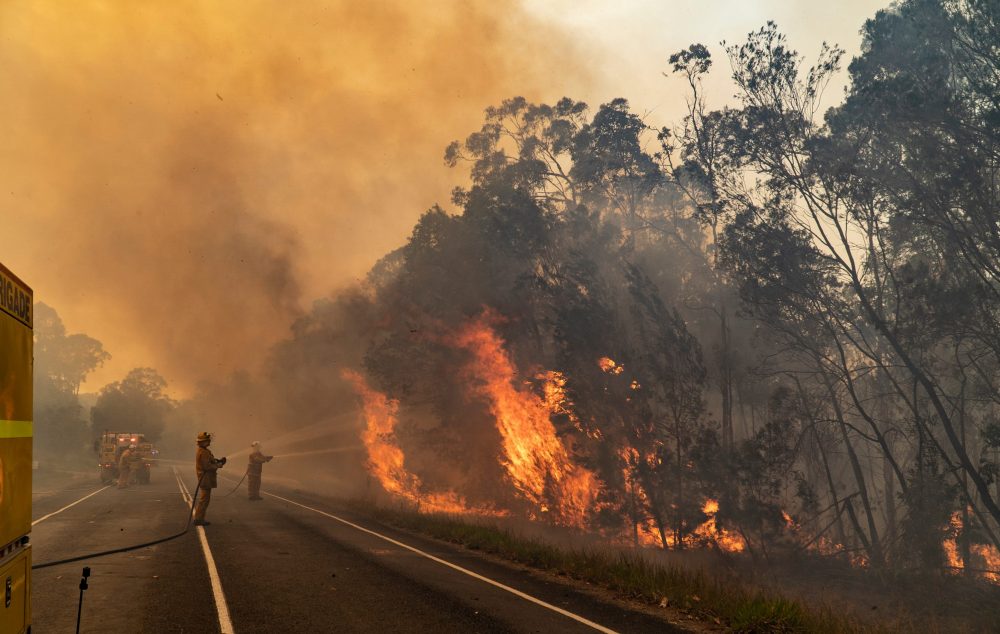The Significance of Bushfire Monitoring in Fire Protection
In the world of fire defense, the significance of effective bushfire monitoring can not be understated. As communities worldwide grapple with increasing circumstances of wildfires, the proactive method to preventing and alleviating these all-natural calamities through tactical bushfire management strategies has actually emerged as an important aspect. Beyond the prompt threat to human life and building, the interaction between bushfire monitoring and environmental preservation, area involvement, and environment modification positions complex obstacles that need thorough options.
Significance of Proactive Bushfire Prevention
Aggressive bushfire prevention methods are necessary in alleviating the ruining influences of wildfires on ecological communities and neighborhoods. One crucial facet of positive bushfire avoidance is gas administration.
Informing the public on fire security practices and advertising neighborhood understanding regarding the value of bushfire avoidance are important components of aggressive strategies. Ultimately, positive bushfire prevention plays a substantial duty in protecting areas and ecosystems from the damaging influences of wildfires.
Function of Community Involvement in Fire Security
Involving the neighborhood in fire protection efforts is essential to boosting the performance of aggressive bushfire prevention approaches. Neighborhood engagement plays a vital function in fostering a collective understanding of the risks presented by bushfires and the significance of preparedness measures. By including local homeowners, authorities can share important information ablaze security techniques, emptying treatments, and early caution systems, empowering individuals to take aggressive steps to secure their residential or commercial properties and lives.
By fostering a culture of readiness and cooperation, communities can enhance their capacity to react effectively to bushfire emergency situations, decreasing the influence on residential properties and lives. Eventually, neighborhood engagement is a cornerstone of extensive fire protection approaches, highlighting the significance of cumulative activity in securing susceptible locations from the hazard of bushfires.
Relevance of Wildlife Conservation in Bushfire Administration
Preservation of wild animals plays an essential role in effective bushfire monitoring methods, making sure the protection of diverse environments and biodiversity in fire-prone areas. Wildlife conservation is essential as it adds to the general durability of ecological communities, helping in their ability to hold up against and recover from the influence of bushfires. By preserving habitats and securing various varieties, the all-natural equilibrium within these environments is maintained, which is crucial for their long-term wellness and sustainability.
Moreover, wildlife preservation additionally aids in minimizing the risk and strength of bushfires. Healthy environments with well-preserved wildlife populaces can serve as all-natural firebreaks, slowing down the spread of fires and limiting their devastating potential (BAL Report). Certain animal types, like delving pets or birds that spread seeds, play unique functions in preventing fires or aiding in the post-fire regrowth of habitats
Integrating wild animals conservation right into bushfire monitoring methods is not just vital for securing biodiversity yet also for promoting the general wellness and strength of ecological communities in the face of enhancing fire threats.
Advantages of Strategic Gas Decrease Programs
Strategically carrying out fuel reduction programs is essential in mitigating the threat and effect of bushfires in fire-prone regions. These programs involve regulated burning, mechanical cleaning, and various other approaches to minimize the amount of flammable plant life offered to sustain wildfires. By strategically reducing gas helpful site tons in crucial areas, such as near residential areas or essential facilities, the strength and spread of bushfires can be dramatically reduced.
One of the main benefits of gas decrease programs is the enhancement of total fire durability in a community. By creating calculated gas breaks and decreasing the connection of greenery, these programs help to disrupt the path of a bushfire, making it simpler for firemans to consist of and view snuff out the blaze. Additionally, gas reduction programs can safeguard biodiversity by preventing exceedingly extreme fires that can devastate environments and endanger wild animals populations.
Additionally, these programs can likewise protect human lives and residential or commercial property by lowering the danger of tragic fires that posture a considerable threat to communities. Ultimately, critical fuel reduction programs play a crucial function in positive bushfire management and promoting a more secure environment for both people and nature.
Effect of Environment Modification on Bushfire Danger

Higher temperatures result in drier plants, making it more prone to ignition. Reduced rainfall in specific regions lengthens drought conditions, better enhancing the flammability of the landscape. Furthermore, the changing climate weblink has actually altered wind patterns and weather, leading to even more unpredictable fire behavior and fast fire spread.
As the environment proceeds to alter, the frequency and intensity of bushfires are expected to climb, necessitating a positive and flexible technique to bushfire administration. Techniques should progress to make up the changing risk landscape, integrating climate forecasts and thinking about lasting strength in fire management planning. Resolving the impact of environment modification on bushfire danger is crucial in establishing efficient techniques to secure lives, home, and the environment.
Conclusion
Finally, positive bushfire prevention, community involvement, wild animals conservation, strategic fuel decrease programs, and factor to consider of environment modification are crucial components in effective fire protection. By implementing these strategies, we can much better handle bushfire dangers and shield both human lives and the environment. Bushfire Management Plan. It is crucial that stakeholders function together to prioritize these measures to reduce the terrible impact of bushfires on ecological communities and neighborhoods

As the environment proceeds to alter, the regularity and strength of bushfires are anticipated to climb, necessitating a flexible and positive strategy to bushfire monitoring.In verdict, aggressive bushfire avoidance, area involvement, wildlife preservation, calculated gas reduction programs, and consideration of climate change are vital elements in reliable fire defense.